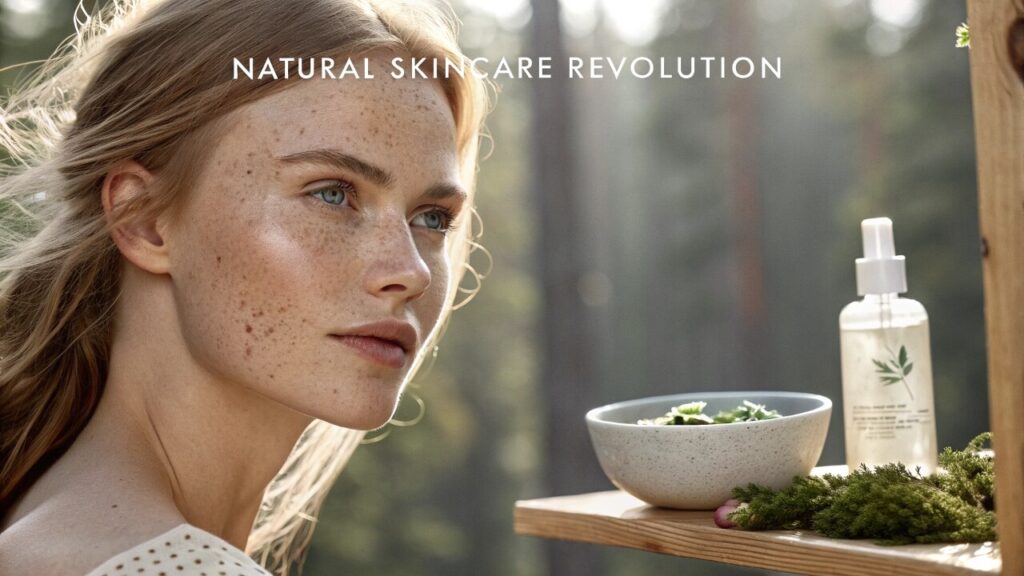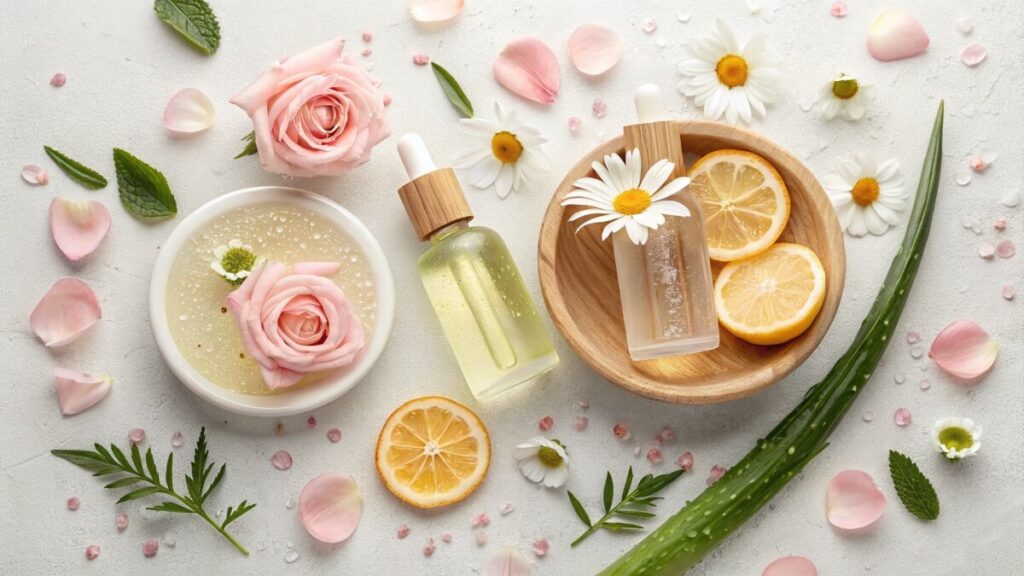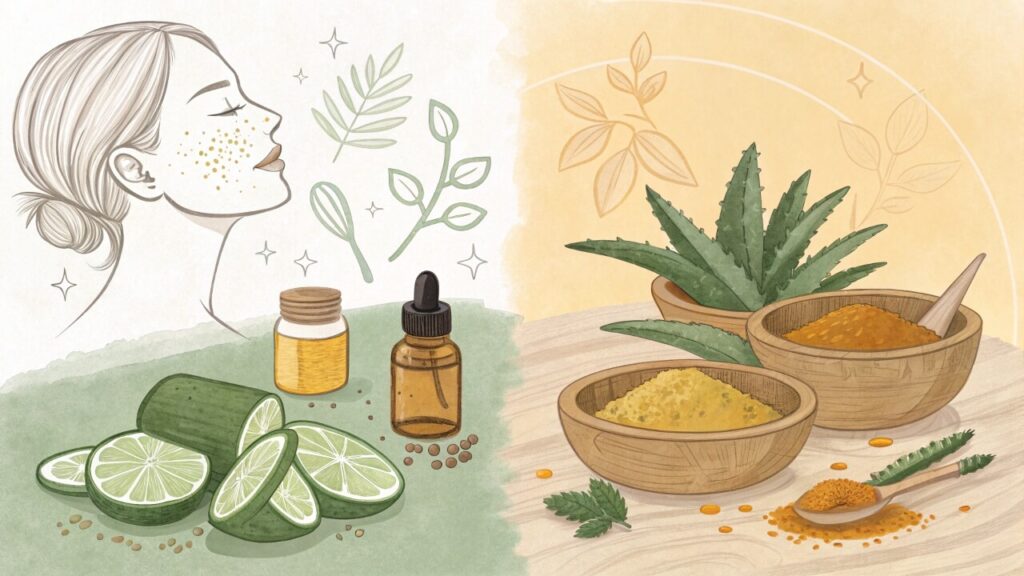The Truth About Greenwashing in Natural Skincare (And How I Got Scammed)

Ever grab a “100% Natural!” face cream, only to find ingredients that sound like a mad scientist’s grocery list? Yeah, me too. Let’s talk about greenwashing—the corporate con that’s tricking us into buying trash disguised as treasure.
My Greenwashing Wake-Up Call
Last year, I bought a “Pure Earth” serum with a bamboo cap and lavender fields on the label. Felt like a dang eco-warrior… until I broke out in hives. Turns out, “natural fragrance” meant synthetic lavender oil mixed with preservatives. Cool.
What Greenwashing Actually Looks Like
The “Nature Aesthetic” Scam
Brands slap leaves, flowers, and words like “botanical” on packaging to feel earthy. But here’s the kicker:
- “Clean Beauty” = No legal definition. It’s like labeling chips “family-sized” when they feed one sad roommate.
- “Chemical-Free” = Literally impossible. Water’s a chemical, Susan.
My rule: If the packaging looks like a Pinterest board, triple-check the ingredients.
5 Shady Tricks I’ve Fallen For (So You Don’t Have To)
1. The “One Natural Ingredient” Ploy
“Now with aloe vera!” …and 12 mystery synthetics.
Example: A “green tea” toner I tried was 90% alcohol. My face rebelled like a toddler denied candy.
2. Fake Certifications
Some brands invent badges like “EcoLove Certified.” Translation: We paid an intern $50 to design this logo.
3. Recyclable If You’re a NASA Engineer
“Just disassemble the pump, separate the plastic #5, and mail it to our facility in Finland!” Pass.
4. Carbon “Offset” Fairy Tales
“We plant a tree for every purchase!” …in a forest that burns down next year.
5. The “Vegan” Distraction
Vegan ≠ non-toxic. I’ve seen vegan mascara with more chemicals than a high school lab.
How to Spot Greenwashing: My Paranoid Checklist
| Suspicious AF | Legit |
|---|---|
| Vague terms (“eco-friendly”) | Certifications (ECOCERT, Leaping Bunny) |
| Parabens in “natural” products | Transparent supply chain maps |
| Overly poetic ingredient lists | Short, recognizable ingredients |
Pro Tip: I use the EWG Healthy Living app to scan products in-store. If it scores higher than 3, I yeet it back on the shelf.
Brands That Walk the Talk (And Ones That Just Talk)
The Heroes
- Biossance: Uses sugarcane-based squalane. Even their shipping boxes compost. I’ve buried one in my yard. It worked.
- Ethique: Shampoo bars that last 80 washes. I’ve used one for 3 months—still going.
- Farmacy: Refillable jars. I’ve repurposed mine as spice containers. Multitasking queen.
The “Nope” List
- Brand X: Claims “ocean-friendly” but uses microplastics. The audacity.
- Brand Y: “Recyclable” tubes that require 7 steps to recycle. Ain’t nobody got time.
3 Things I Do Now to Avoid Getting Played
1. I Boycott Buzzwords
If I see “pure,” “green,” or “detox,” I walk away. Thanks, trauma.
2. I Grill Brands on Instagram
Slide into DMs like: “Hey, where’s your fair-trade certification?” Most ghost. The good ones reply with receipts.
3. I Shop Local & Small
My fave indie brand? St. Louis Soap Co. They send handwritten notes and admit when ingredients are pricey. No BS.
The Ugly Truth About “Natural” Labels
Fact: The FDA doesn’t regulate “natural.” A brand could mix motor oil with rose petals and call it “wildcrafted.”
Story Time: My cousin bought “organic” deodorant that gave him a rash. Spoiler: The “organic” part was the cardboard tube.
FAQs: Real Questions from My Followers
Q: Is The Ordinary greenwashed?
A: Nope. They’re brutally honest. Their website looks like a spreadsheet, and I respect that.
Q: Are all preservatives evil?
A: Nah. Preservatives stop mold. I’d rather have phenoxyethanol than a face full of fungus.
Q: Can I trust Target’s “clean” icon?
A: Sorta. They ban 50+ ingredients, but still—check the labels.
Q: What’s the most greenwashed product?
A: Dry shampoo. So many “natural” ones still use butane. BUTANE. IN MY HAIR.
Don’t Let Big Beauty Gaslight You
Greenwashing thrives on our guilt. Stay petty. Demand proof. And remember: Truly sustainable brands don’t need a rainforest on their packaging.
Sources:



